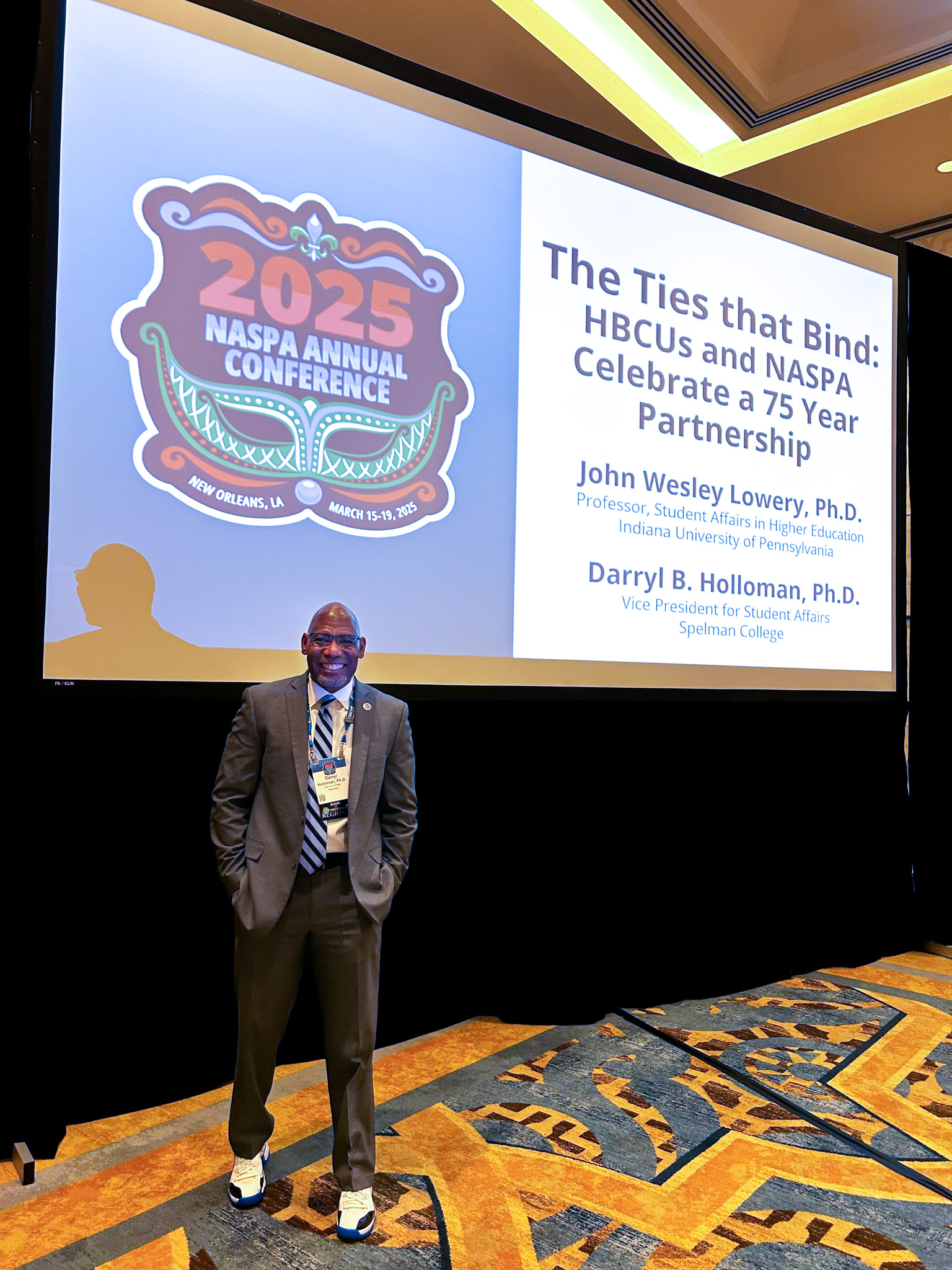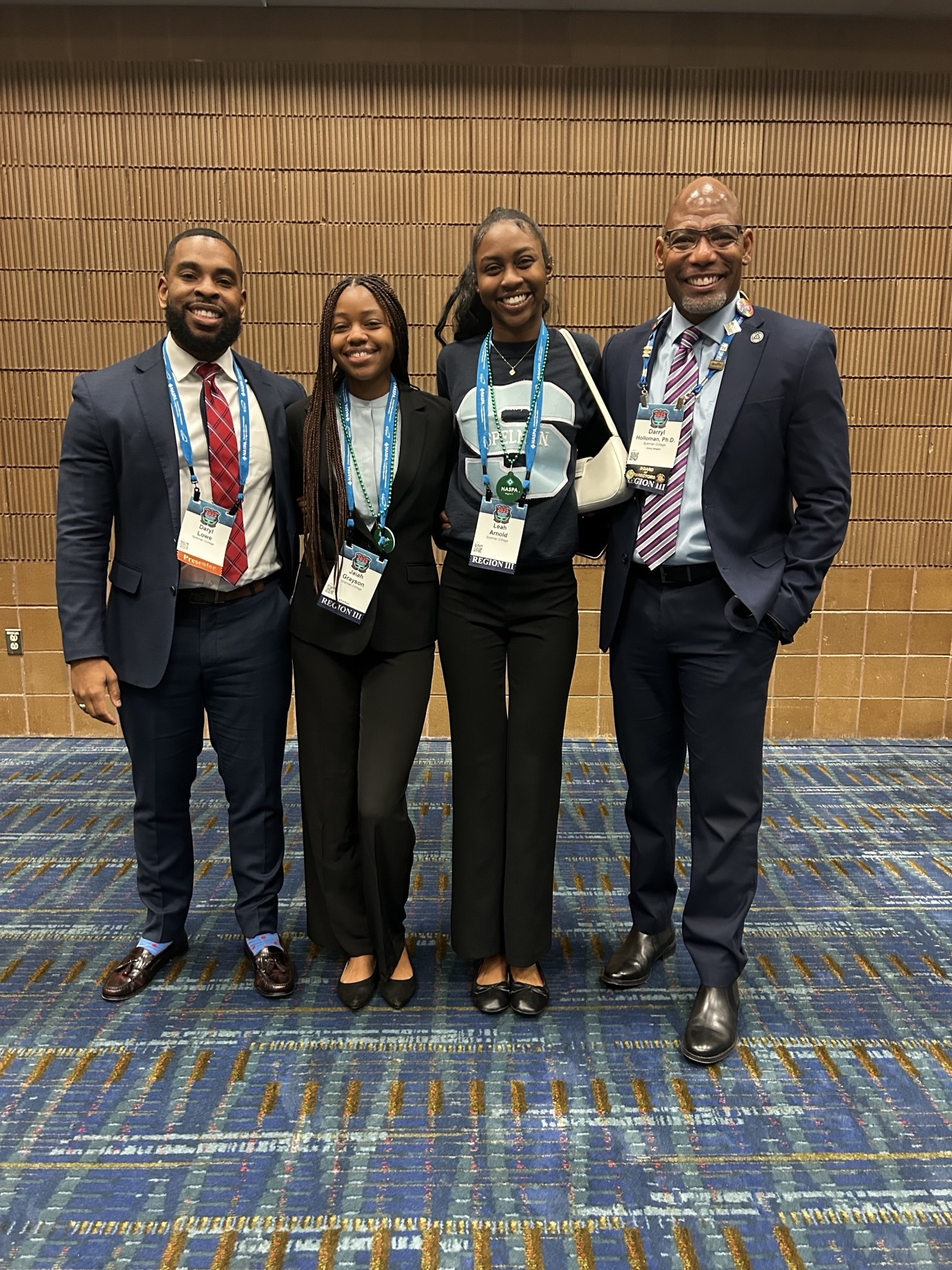Spelman College is proud to announce that Dr. Darryl Holloman, vice president for Student Affairs, has been elected as chair-elect of the National Association of Student Personnel Administrators (NASPA) Board of Directors. Dr. Holloman is the first representative from a Historically Black College or University (HBCU) to serve as chair of the NASPA Board.
This achievement of being elected as the board chair-elect for NASPA means preparing to become the future board chair by understanding the organization's goals, participating in committees, contributing to strategic planning and helping with succession planning. Dr. Holloman’s role is essential for ensuring smooth leadership transitions and continuity in achieving NASPA's mission. He will be serving as board chair-elect for the current year and will officially serve as board chair during the 2026-2027 term. Reflecting on his long tenure with NASPA, Dr. Holloman considered the organization's dedication to fostering student success in alignment with the missions of its institutional members. He pondered how he could further contribute to this mission by supporting the transition of the new president, Dr. Amelia Parnell who herself is a proud HBCU graduate.
Reflecting on his long tenure with NASPA, Dr. Holloman considered the organization's dedication to fostering student success in alignment with the missions of its institutional members. He pondered how he could further contribute to this mission by supporting the transition of the new president, Dr. Amelia Parnell who herself is a proud HBCU graduate.
“I’ve been a member of NASPA for over 27 years. During that time, I have been committed to the core mission of NASPA in making the field of student affairs a vibrant component of the higher education landscape," said Dr. Holloman. “I deliberately considered running for the board chair position in this moment because I wanted to continue supporting NASPA, but I also wanted to ensure a successful transition for Amelia in her new role. I love her ideas, her energy, and I believe we have great potential coordinating our efforts and working in tandem.”
Dr. Holloman is keenly focused on the mission of ensuring that higher education continues to hold value and the trust of our constituencies. One thought that intrigues him as board chair is how to highlight the experiences of students who attend minority serving institutions.
“Making sure HBCUs, Hispanic Serving Institutions and Tribal Colleges matter and demonstrating that their representation in higher education is essential. I want to get a better sense of the student success measures at minority serving institutions, because there’s not a lot of data regarding the sense of belonging, wellbeing and satisfaction ofthe students who attend these institutions,” said Dr. Holloman. “We have to do a better job of large-scale research, since we’re in a space where we have to evaluate the impact of minority serving institutions on the lives of our students and the impact that these institutions have on our society, the student affairs profession as a whole and so on.”
In addition, by partnering with Dr. Tim Bono, assistant dean in Arts and Sciences and lecturer in psychological and brain sciences at Washington University, Dr. Holloman intends to collect data on the perspectives of presidents, provosts, governing boards and accreditation bodies regarding their views on student affairs field. He would like to gauge how much student affairs as a profession is viewed as an integral part of our institution’s missions and priorities. Dr. Holloman desires to get to the root of why student affairs professionals feel devalued and diminished in their roles.

“My focus is to examine the experiences of students at minority serving institutions and underscore the value of student affairs professionals. By exploring the lived experiences of students and the perspectives on student affairs professionals, I aim to highlight their crucial roles and various values that are held higher education spaces,” said Dr. Holloman. “This research reflects the passion driven by a deep commitment to enhancing the educational journey for all students and improving the experiences of all student affairs professionals.”
Dr. Holloman considers this the crowning achievement of his career, as it builds upon the legacy of Dr. Armour J. Blackburn, the first person from an HBCU to become a NASPA member. Dr. Blackburn, who was the dean of students at Howard University, led the institution to become the first HBCU to join NASPA in 1952.